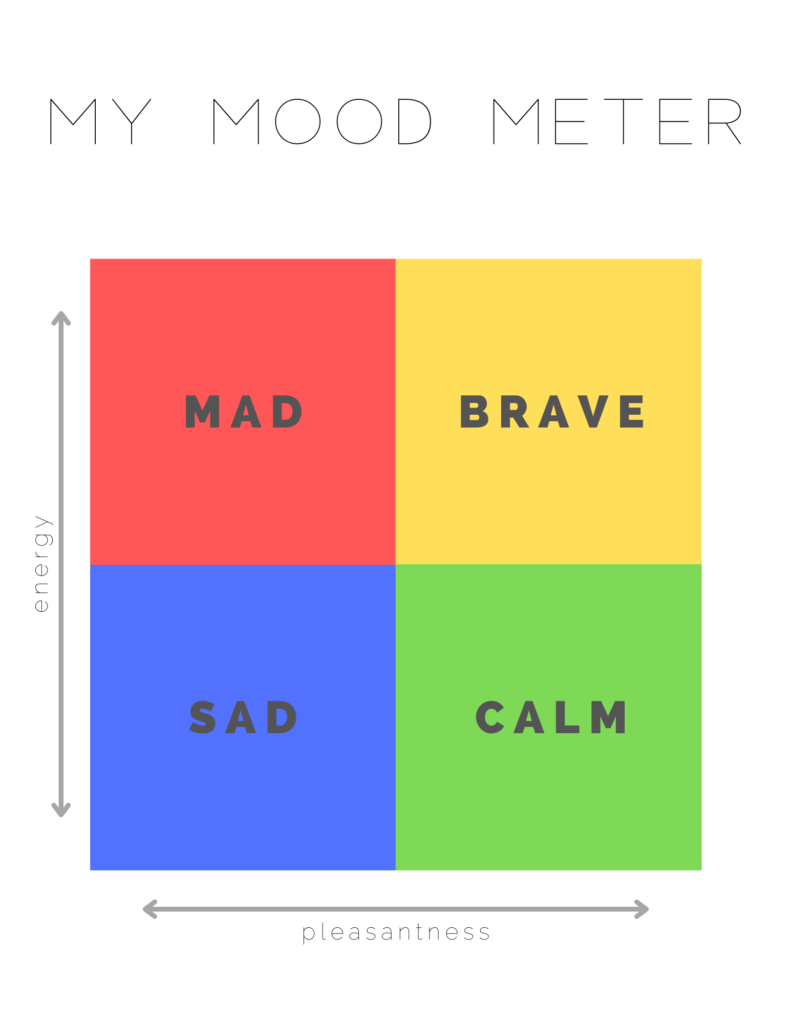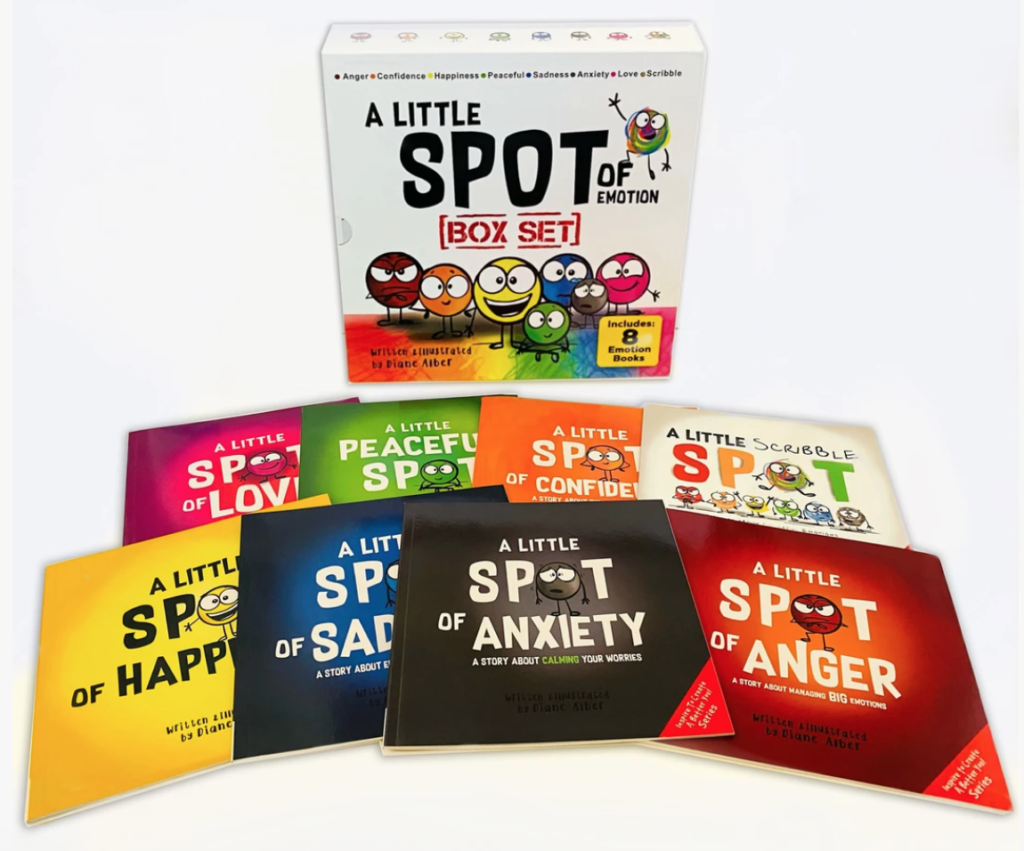Emotions are difficult to navigate as a human, but especially as a young child. Imagine having the same range of emotions that we have as an adult, but no vocabulary to properly identify those emotions we are feeling. How frustrating would that be? It might make you want to act or react in a way that seems inappropriate. That’s exactly what we are seeing in our young children when they throw tantrums and have big meltdowns.
The End Goal
Our goal as parents is to help our children form a high level of emotional intelligence, so they are able to properly handle their emotions independently. In order for them to get to that point, we must teach and demonstrate the proper steps to do so. First, we want them to recognize their emotions (I feel something changing in me) and then be able to understand what happened that made them feel this way. We then want them to label that emotion (using a word that best fits their feelings) and express that feeling in an appropriate manner. Once they have expressed their emotions, it’s important that they are able to complete the final step to regulate their emotions to either remain in that state or change something to shift their emotions towards a more desirable place.
Independently demonstrating these steps WILL NOT happen overnight. It will take years for children to properly handle their wide range of emotions. I mean, as adults we still struggle with appropriately expressing and regulating our emotions, so our expectations need to be in the right place when it comes to our children.
Where to Begin
A great place to start with our little ones (even before they are able to form their own words) is to focus on expanding their vocabulary – specifically their emotional vocabulary.
– EXPAND VOCABULARY –
Try your best to stay away from the basics like mad, sad, and happy. Instead, broaden the scope of emotions all together by introducing words like tired, relaxed, calm, confident, brave, proud, worried, or frightened. When you introduce or re-introduce any new word, don’t forget to be prepared with an age-appropriate definition for that word. This is very important when it comes to emotional vocabulary because the definition of these words will help your little one understand what each emotion means, which will help them make connections to their own feelings down the road.
– INTRODUCE A MOOD METER –
Visual aids are so helpful in early childhood education. The mood meter helps both parents and children identify new emotional vocabulary words and properly place them into the appropriate categories. The mood meter below is free for you to print and use with your little ones at home. I would recommend framing or laminating it and keeping it in a place that is safe for them to access independently. Just like any other educational tool, the mood meter should not simply be printed and hung, but rather introduced and used by both you and your child regularly.
For example, if I were frustrated, I could take my child over to the mood meter and write down the word frustrated in the ‘mad’ box and then give a brief explanation on why that feeling belongs in that particular box. Your mood meter will quickly fill up with all sorts of new vocabulary for your little one! This is a great way to model the meter for your little one and help them understand how to use the tool properly. If your child is old enough, they could even help you brainstorm ways in which you could express that feeling in an appropriate manner or maybe how to regulate back to a more desirable feeling. If you’re looking for ways to use this mood meter with your little one, feel free to leave a comment below and I’m happy to give specific examples.

– DON’T FORGET TO USE PICTURE BOOKS –
Picture books are one of the best ways to introduce new concepts to children in an age-appropriate way. When you read these books with your children, be sure to leave room for discussion and make sure to give them time to respond with any connections they have made. The scribble series is a great starting point – Click to picture to shop the collection. But if you’re looking to expand your home library a bit further, I have put together a list of some of my favorites through the Bookshop link below.
My Favorite Picture Books about Emotions and Feelings
(BookShop.org helps local book stores by equally distributing all sales to local book shops across the nation or you can choose to support a specific local store near you.)

What Should I Do Next?
This post is the first of a two part series on emotional intelligence in early childhood, so stay tuned for the second part of the series where we get into helping our children appropriately express their emotions and then help them regulate towards the emotion they desire.
As always, please leave any questions or comments you have below and I will do my best to help!

*This post was put together using a variety of thoroughly researched resources from the National Association for the Education of Young Children











Leave a Reply